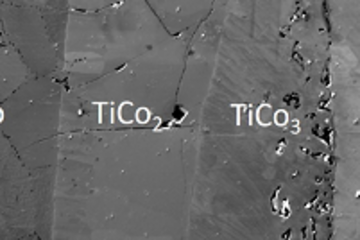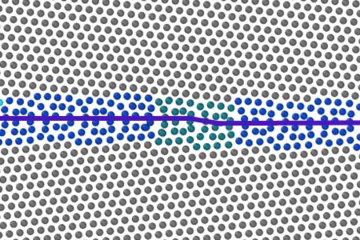All genres
1.
Journal Article
Effect of Substrate Bed Temperature on Solute Segregation and Mechanical Properties in Ti–6Al–4V Produced by Laser Powder Bed Fusion. Metallurgical and Materials Transactions A 54 (8), pp. 3069 - 3085 (2023)
2.
Journal Article
Designing an Fe–Ni–Ti maraging steel tailor-made for laser additive manufacturing. Additive Manufacturing 73, 103647 (2023)
3.
Journal Article
On strong-scaling and open-source tools for analyzing atom probe tomography data. npj Computational Materials 7 (1), 21 (2021)
4.
Journal Article
Laser Powder-Bed Fusion as an Alloy Development Tool: Parameter Selection for In-Situ Alloying Using Elemental Powders. Materials 13 (18), 3922 (2020)
5.
Journal Article
Control of thermally stable core-shell nano-precipitates in additively manufactured Al–Sc–Zr alloys. Additive Manufacturing 32, 100910 (2020)
6.
Journal Article
Steels in additive manufacturing: A review of their microstructure and properties. Materials Science and Engineering A: Structural Materials Properties Microstructure and Processing 772, 138633 (2020)
7.
Journal Article
On Strong Scaling Open Source Tools for Mining Atom Probe Tomography Data. Microscopy and Microanalysis 25 (S2 ), pp. 298 - 299 (2019)
8.
Journal Article
Predictive process parameter selection for Selective Laser Melting Manufacturing: Applications to high thermal conductivity alloys. Additive Manufacturing 27, pp. 246 - 258 (2019)
9.
Talk
Exploiting intrinsic heat treatment to trigger precipitation reactions in Maraging steels during Laser Additive Manufacturing. Metal Additive Manufacturing Conference, Örebro, Sweden (2019)
10.
Talk
Process and Alloy Design for In-Situ Precipitation Strengthening of Al–Sc Alloys During Laser Metal Deposition. Metal Additive Manufacturing Conference, Vienna, Austria (2018)
11.
Talk
Scalable Quantifying of Evolving Descriptive Spatial Statistics in Full-Field Crystal Plasticity and Atom Probe Tomography. Institut für Metallkunde und Metallphysik, RWTH Aachen University, Aachen, Germany (2018)
12.
Talk
Precipitation kinetics during non-linear heat treatment in Laser Additive Manufacturing. ThermoCalc User Meeting 2017, Aachen, Germany (2017)
13.
Poster
Intrinsic Heat Treatment in Al–Sc Alloys During Laser Metal Deposition - Driving Factors, Kinetics and Effect of Impurities. Alloys for Additive Manufacturing Symposium 2019 (AAMS2019), Chalmers University of Technology, Gothenburg, Sweden (2019)
14.
Poster
Preventing the Coarsening of Al3Sc Precipitates by the Formation of a Zr-rich Shell During Laser Metal Deposition. Alloys for Additive Manufacturing Symposium, Sheffield, UK (2018)
15.
Poster
Precipitation kinetics during non-linear heat treatment in Laser Additive Manufacturing. International Conference on Advanced Materials and Processes, ‘ADMAT 2017’ SkyMat, Thiruvananthapuram, India (2017)
16.
Poster
Precipitation kinetics during non-linear heat treatment in Laser Additive Manufacturing (LAM). Alloys for Additive Manufacturing Symposium, Zürich, Switzerland (2017)
17.
Thesis - PhD
Precipitation during Intrinsic Heat Treatment in Laser Additive Manufacturing. Dissertation, RWTH Aachen University (2020)











